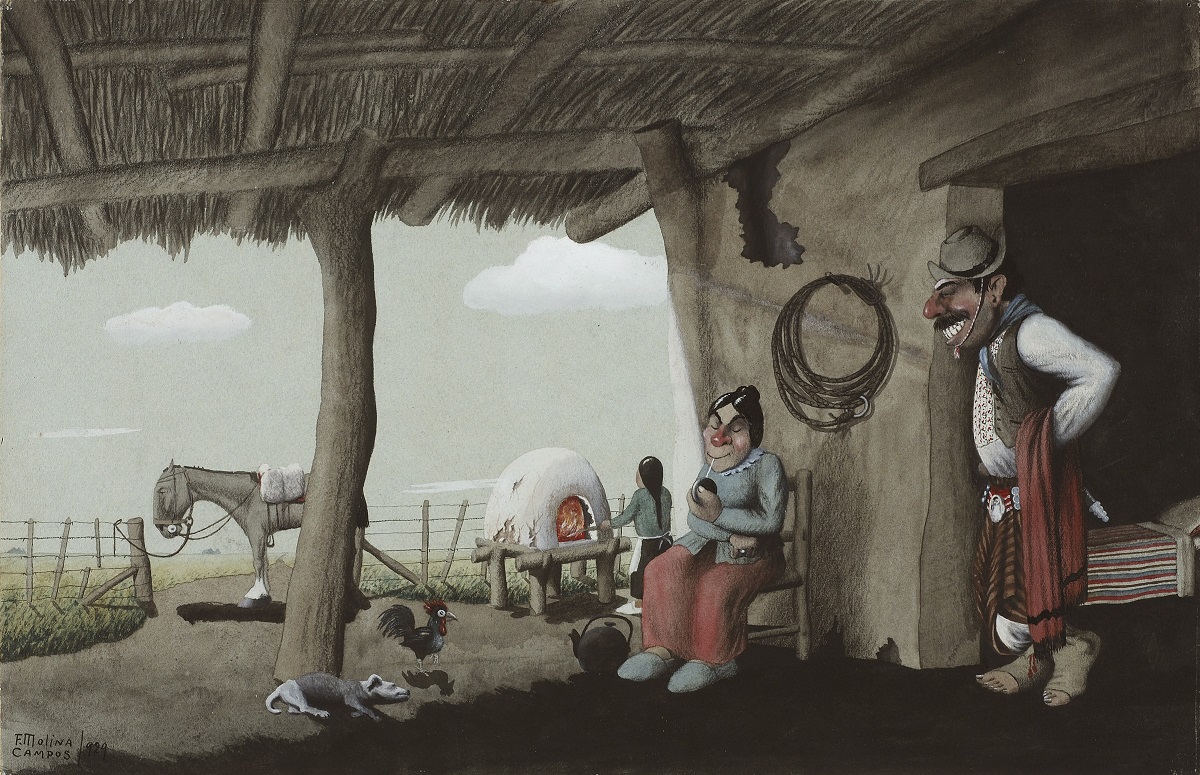“Costumbrismo Argentino: The Molina Campos Collection from Las Lilas de Areco Museum” is comprised of 32 works by master Florencio Molina Campos, one of the great portrait painters of rural Argentina in the early 20th century.

San Jose, 26 August 2021 (IICA). Las Lilas Museum in San Antonio de Areco, a picturesque town with a gaucho-esque aura located 113 kilometers from the city of Buenos Aires, enshrines one of the best artistic expressions originating in the immense plains of the Pampas.
As part of the town’s heritage, the Museum, which is owned by Las Lilas Foundation, exhibits the valuable collection of original works by renowned Argentine painter and illustrator Florencio Molina Campos, celebrated for his costumbrista portraits of the Pampas and his country.
Starting this week, the collection can also be viewed at AgroArt – Virtual Art Museum of the Inter-American Institute for Cooperation on Agriculture (IICA), which inaugurated the exhibition dubbed “Costumbrismo Argentino: The Molina Campos Collection from Las Lilas de Areco Museum”, comprising 32 works by the artist who passed away in 1959.
Molina Campos’ costumbrista paintings reflect rural Argentina in the early 20th century and depict homes from various social strata in works that speak to the traditions of rural life.
The enchanting countrymen and women are portrayed in different scenes from the Pampas—often performing work, other times at play—as testimony to a past that endures in the heart of the Americas.
Originally published on Argentine almanacs manufactured by the textile company Alpargatas between 1931 and 1944, the artworks exhibited by AgroArt in digital format filled the walls of ranches, markets and homes across Argentina.
“I would say to writers, to musicians, to artists: go to the Pampas, to the highlands, to the mountains and record our immense, dispersed wealth, as we still have time to save our native folklore. How sad it will be for future generations to have to ask us to tell them stories! How sad it will be if we cannot tell them what happened to the gaucho and what we have done to keep the National Tradition alive!”, said the artist in a decalogue left as a legacy to future generations.
His art can now be seen from any place in the world through AgroArt.
Other works that can be viewed on IICA’s Virtual Museum include “Footprints from Chiapas: From Tuxtla Gutiérrez to San Juan Chamula”, “Identity and Roots”, “Rural Chronicles” and “The Colors of Earth”.
AgroArt is a space for the dissemination and integration of the artistic expressions of the Americas emanating from the rich diversity of the Hemisphere’s rural areas.
To visit AgroArt, the Virtual Art Museum of IICA, click here: https://agroart.iica.int/
More information:
Institutional Communication Division.
comunicacion.institucional@iica.int











